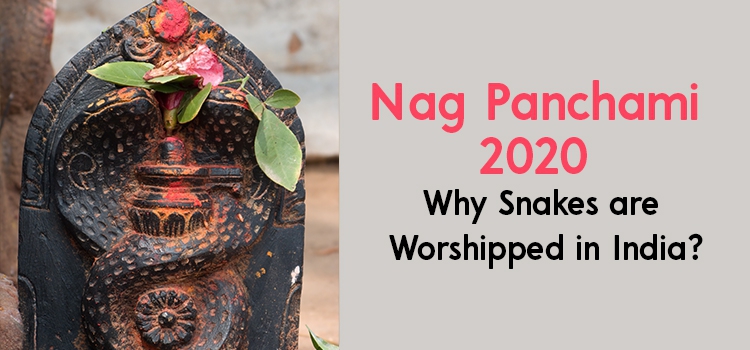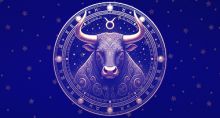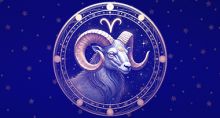Naga Panchami 2020 : Why Snakes are Worshiped in India?
A Festival for Snakes: Naga Panchami:
Since ancient times, snakes have been the objects of worship in India. There is a festival, too, which venerates snakes, and it is called Naga Panchami. It is on the 5th day of the waxing moon, or Shukla paksha, in the Hindu month of Shravan (July-August). The festival is celebrated in many parts of India, as well as the neighboring country of Nepal. One reason for snake worship is that snakes have been associated with Hindu gods like Shiva, Vishnu, and Skanda or Muruga. While Shiva wears a snake around his neck, Vishnu is seen to recline on a serpent.
On the day of Naga Panchami, Shiva devotees offer milk at temples, and make Kheer at home. They also observe a fast. People worship twelve serpents on this day - Ananta, Shesha, Vasuki, Padma, Karkotaka, Kambala, Ashvatara, Kaliya, Dhritarashtra, Pingala, Shankhapala, and Takshaka, They chant the Maha Mrithunjaya Mantra and also meditate on Shiva, while reciting the mantra ‘Om Namaha Shivaya’
.
The idols of the gods and the serpents are washed with milk and worshipped. People pray for protection from snakes as they come out of their hiding places during the monsoon in search of dry places. Although venomous, snakes are harmless beings and bite only when they are attacked by humans. In Hindu culture, the king cobra is seen as a Brahman, and hence it is a sin to kill one. Many people are known to humbly ask a snake that enters their house to leave. Many Hindus fast on Naga Panchami and offer milk, flowers, and milk-based sweets in temples. They also distribute the Prasad to the poor.

Snake worship in India
The region of Malabar used to be associated with snake worship. In some parts of India, one can find images of cobras carved on stone. These are placed on little platforms of stone, or at the base of a tree, most often, a holy fig. On the 5th day of Shukla Paksha or the waxing moon in Shravan month, which is the day of Naga Panchami, these stones are washed after which milk, curds, ghee, and coconut water are poured over them. Then they are decorated with flowers, and offerings are made. The cobra stone is also worshipped by those who have no male progeny. It is considered a deadly sin to kill or injure a cobra. In the popular imagination, the cobra is seen as a Brahmin, and killing a Brahmin is believed to be the biggest sin. It is also believed that a person who kills a cobra would contract leprosy. This punishment also applies to those who destroy its eggs by digging or plowing the land where it resides or setting fire to a forest or grassland where snakes are found. Perhaps for this reason, on Naga Panchami day, people are not allowed to dig the earth, cut, or fry anything.
In Kerala, the Mannarassala temple in Haripad is renowned for serpent worship. It has a Sarpa Kavu or sacred grove covering many acres, where a clan of snakes is said to live. In the grove are two small temples dedicated to the snake clan’s king and queen. Thousands of snake images made of granite can also be found here. They represent the followers of the snake king and queen. An annual festival called Ayilyam festival is held at this temple in Kanni and Thulam months (September and October). Many people come for worship with offerings of melons, salt, gold, silver, etc. The day before the festival, the temple authorities organize mass feeding for Brahmins. Many people come here seeking relief from Sarpa Dosha. Couples who have no children make offerings here to propitiate the snake gods. Snakes are symbols of fertility in Hindu mythology. According to one account, Mannarassala was the place that the snakes fled to, when Arjuna set fire to the Khandava forest, an incident that finds mention in the Mahabharata. Legends say that the snakes prayed to the gods to protect them from the fire, and the earth in this place cooled miraculously. Hence, it got the name ‘Mann-aari—sala’, which means the place where the earth became cool.
There is a tribe called Pulluvans in the Malabar region, who are medicine-men, astrologers, medicine-men, singers, and priests in snake groves. They are supposedly the descendants of a male and female servant who were exiled for rescuing a female snake that escaped when the Khandava forest was set on fire. The Pulluvan and Pulluvathi couple visit houses with their pulluva kudam (pot drum) to a house, play the instrument, and sing songs, in return for some money from the householders. This ceremony is called Pamban Tullal and is performed for propitiating the snake gods. It is believed that this ceremony will invoke the blessings of the Naga Devatas and ward off the problems faced by the family, whether it’s delayed marriage, lack of progeny, decline of fortunes, ill health, etc.
There are many snake temples in India. The famous Nagaraja Temple in Nagercoil, Tamilnadu, is very ancient, and many people come here from all parts of the country, seeking the blessings of the snake gods for progeny and relief from skin ailments. There are snake temples in Mangalore, Gujarat, and Jammu and Kashmir, too.
Snakes in Astrology
Snakes are important in Vedic astrology. The shadow planets and lunar nodes, Rahu and Ketu, are associated with snakes and are depicted as the head and tail of a snake, respectively. When these planets are unfavorably placed in the birth chart of a person, they cause problems. This is called Sarpa Dosha. It is generally found that people with Sarpa Dosha suffer from infertility, face delays in marriage, develop health problems, etc. There is also a dosha called Kala Sarpa Dosha, which is caused when all the planets in the birth chart are encircled by the snake planets, Rahu and Ketu. Such a person faces problems in all aspects of his/her life and will not be able to progress. This is one of the worst doshas that can afflict a person. Astrologers usually recommend remedies like fasting and worshipping the Naga Devatas on the day of Naga Panchami.
For all these reasons, snakes exercise a powerful hold on the imagination of Hindus in India. As the companions or servants of Hindu gods, they are invested with divinity. As ancient symbols of fertility, they are seen to have the power to bless people with progeny. And, as planetary deities, they are regarded as having a say in the destinies of human beings. Worshipping snakes is also believed to remove one’s sins. Rahu and Ketu, incidentally, are karmic planets who determine how our past karma plays out in our present lives. Hence, snakes are venerated and honored in India during the festival of Naga Panchami.



















